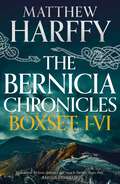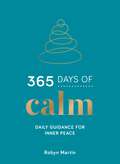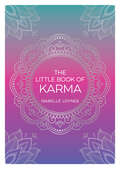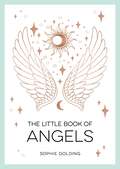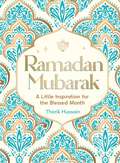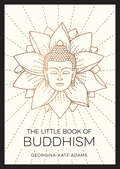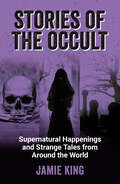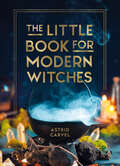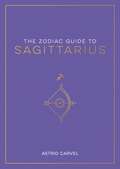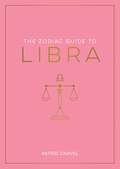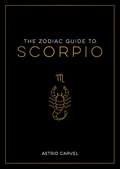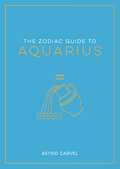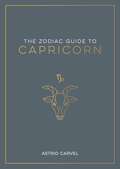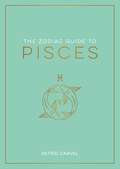- Table View
- List View
George Moore: Spheres of Influence
This invigorating volume explores the literary worlds inhabited by the pioneering Irish author George Moore (1852–1933). With an eye to Moore’s innovative embrace of visual art, feminism and literary history, and in the spirit of his feisty resistance to ‘orthodoxy’, it investigates his influences and inventive strategies in novel, short story and memoir. Amongst the names emerging from the disparate spheres of impressionism, literary coteries, the paratextual and the music world are those of Manet, Mallarmé, Wilde, Héloïse, Elgar and Bourdieu, all with Moorian links. Contested depictions of religion and nationalism simmer; France and French influences encompass fin-de-siècle stories and medieval texts; epistolary details evidence vital parental support; contemporary authors write back to Moore. These voyages of discovery enter the fields of feminist scholarship and the New Woman, life writing and letters, fin-de-siècle aesthetics, intersections between art, music and literature, and literary transitions from Victorian to Modern. Valuably, the authors suggest numerous opportunities for additional research in these areas, as well as within Moore studies. This collection, with contributions from an international set of established and new scholars, delivers fresh and original findings as it builds on the substantial and ever-growing corpus of Moore studies.
Body Technologies in the Greco-Roman World: Technosôma, gender and sex
A collection of papers that introduces the notion of the technosoma (techno body) into discussions on the representations of the body in classical antiquity. By applying the category of the technosoma to the ‘natural’ body, this volume explicitly narrows down the discussion of the technical and the natural to the physiological body. In doing so, the present collection focuses on body technologies in the specific form of beautification and body enhancement techniques, as well as medical and surgical treatments. The volume elucidates two main points. Firstly, ancient techno bodies show that the categories of gender and sexuality are at the core of the intersection of the natural and the technical, and intersect with notions of race, age, speciesism, class and education, and dis/ability. Secondly, the collection argues that new body technologies have in fact a very ancient history that can help to address the challenges of contemporary technological innovation. To this end, the volume showcases the intersection of ‘natural’ bodies with technology, gender, sexuality and reproduction. On the one hand, techno bodies tend to align with normative ideas about gender, and sexuality. On the other hand, body modification and/or enhancement techniques work hand in hand with economic and political power and knowledge, thus they often produce techno bodies that are shaped according to individual needs, i.e. according to a certain lifestyle. Consequently, techno bodies threaten to alter traditional ideas of masculinity, femininity, male and female sexuality and beauty.
Polin: Jews and Their Neighbours in Eastern Europe Since 1750 (Polin: Studies in Polish Jewry #24)
Relations between Jews and their neighbours in eastern Europe have long been perceived, both in the popular mind and in conventional scholarship, as being in a permanent state of conflict. This volume counters that image by exploring long-neglected aspects of inter-group interaction and exchange. In so doing it broadens our understanding of Jewish history and culture, as well as that of eastern Europe. Whereas traditional historiography concentrates on the differences between Jews and non-Jews, the essays here focus on commonalities: the social, political, and economic worlds that members of different groups often shared. Shifting the emphasis in this way allows quite a different picture to emerge. Jews may have been subject to the whims of ruling powers and influenced by broader cultural and political developments, but at the same time they exerted a discernible influence on them - the social, cultural, and political spheres were ones that they not only shared, but that they also helped to create. This model of reciprocal influence and exchange has much to offer to the study of inter-group relations in eastern Europe and beyond. Designed to move the study of east European Jewry beyond the intellectual and academic discourse of difference that has long troubled scholars, this volume contributes to our perception of how members of different groups operate and interact on a multitude of different levels. The various contributions represent a wide cross-section of opinions and approaches - historical, literary, and cultural. Taken together they move our understanding of east European Jewry from the realm of the mythical to a more rational mode. In addition to essays considering interactions between Jews and Poles, other contributions examine relations between Jews and other ethnic groups (Lithuanians, Russians), discuss negotiations with various governments (Habsburg, Lithuanian, Polish, Russian, and Soviet), analyse exchanges between Jews and different cultural realms (German, Polish, and Russian), and explore how the politics of memory affects contemporary interpretations of these and related phenomena.
Polin: Jews in the Former Grand Duchy of Lithuania Since 1772 (Polin: Studies in Polish Jewry #25)
This volume of Polin, based on scholarship that has emerged since the fall of communism, is a wide-ranging contribution to the complex history of the Jews in Lithuania. Focusing on the specific character of Lithuanian Jewry, the volume opens by examining how their relationship with the surrounding society developed after 1772, both under tsarist rule and then in independent Lithuania. Moving to more recent times, the devastating impact on the Jewish community of the Soviet and Nazi occupations during the Second World War is discussed, as are the further negative consequences on Jewish life of the reoccupation of the country by the Soviets between 1944 and 1990. The volume concludes with material on the slow revival of Jewish life since the collapse of the Soviet Union and the re-emergence of an independent Lithuania, which was accompanied by the revival of many disciplines, such as the study of Jewish history, repressed by Soviet censorship. This revived interest in the country's Jewish past is now playing a key role in the broader transformation of historical memory of the post-Soviet era and the problem of coming to terms with the widespread local collaboration in Lithuania during the Holocaust - a process which has led to important scholarly advances but also to bitter controversy. Collectively, the studies in this volume contribute to a better understanding of the complex history of the Jews in Lithuania and of Lithuanian - Jewish relations and constitute a part of the necessary process of creating a more rounded and inclusive history of the country. CONTRIBUTORS Aelita Ambruleviciute, Marta Aleksandra Balinska, Egle Bendikaite, Michael Casper, Ellen Cassedy, Immanuel Etkes, David E. Fishman, Jack Jacobs, Grigory Kanovich, Saulius Suziedelis, Andrey Krotau, Larisa Lempertiene, Aearunas Liekis, Miriam Offer, Avi Ohry, Karin Ohry-Kossoy, Ausra Pazeraite, Antony Polonsky, Anna P. Ronell, Vladas Sirutavicius, Darius Staliunas, Saulius SuA iedelis, Vytautas Toleikis, Anna Verschik, Theodore R. Weeks, Mordechai Zalkin.
Polin: Jews and Ukrainians (Polin: Studies in Polish Jewry #26)
This volume provides a comprehensive and much-needed survey of the millennium-long history of Jews in the Ukrainian lands. The book challenges the stereotyped vision of the relationship between Jews and Ukrainians and offers in-depth studies of key periods and issues. The survey opens with a consideration of early Jewish settlements and the local reactions to these. The focus then moves to the period after 1569, when control of the fertile lands of Ukraine passed to the Polish nobility. Because it was largely Jews in the service of the nobility who administered these lands, they were inevitably caught up in the resentment that Polish rule provoked among the local population, and, above all, among the Cossacks and peasant-serfs. This resentment culminated in the great revolt led by Bohdan Khmelnytsky in the mid-17th century, in consequence of which the Jews were excluded from that part of Ukraine which eventually came under Russian rule when the Polish-Lithuanian Commonwealth was partitioned. The Jewish response to the establishment of Russian and Austrian rule in the areas of Ukraine that had formerly been in the Polish-Lithuanian Commonwealth is a second major theme of the book, and particularly the Jewish reaction to the emergence of Ukrainian nationalism and the subsequent Ukrainian struggle for independence. A third overarching theme is the impact of the sovietization of Ukraine on Jewish-Ukrainian relations, with a chapter devoted to the 1932-33 Famine (Holodomor) in which millions perished. The book also gives special attention to the growing rift between Jews and Ukrainians triggered by the rise of radical nationalism among Ukrainians living outside the Soviet Union and by conflicting views of Germany's genocidal plans regarding the Jews during World War II. With contributions from leading Jewish and Ukrainian scholars on these complex and highly controversial topics, the book places Jewish-Ukrainian relations in a broader historical context and adds to the growing literature that seeks to go beyond the old paradigms of conflict and hostility. CONTRIBUTORS: Howard Aster, formerly taught Political Science, McMaster University; Rachel Feldhay Brenner, Max and Frieda Weinstein-Bascom Professor of Jewish Studies and Professor of Modern Hebrew Literature, University of Wisconsin-Madison; Ivan Dzyuba, Ukrainian writer and literary critic; member, National Academy of Science of Ukraine; former Ukrainian Minister of Culture; Amelia Glaser, Associate Professor of Russian and Comparative Literature, University of California, San Diego; John-Paul Himka, Professor, Department of History, University of Alberta; Judith Kalik, teaches East European History, Hebrew University of Jerusalem; Myron Kapral, Director, Lviv Branch, Hrushevsky Institute of Ukrainian Archaeography and Source Studies, National Academy of Sciences of Ukraine; Vladimir (Ze'ev) Khanin, Chief Adviser on Research and Strategic Planning, Ministry of Absorption, Israel; Victoria Khiterer, Assistant Professor of History and Director, Conference on the Hilocaust and Genocide, Millersville University, Pennsylvania; Taras Koznarsky, Associate Professor, University of Toronto Sergey R. Kravtsov, Research Fellow, Center for Jewish Art, Hebrew University of Jerusalem; Taras Kurylo, independent scholar, Calgary; Alexander J. Motyl, Professor of Political Science, Rutgers University-Newark; Jakub Nowakowski, Director, Galicia Jewish Museum, Kraków; Alexander Pereswetoff-Morath, Associate Professor and Academy Research Fellow, Royal Swedish Academy of Letters, History, and Antiquities, Stockholm; Yohanan Petrovsky-Shtern, Crown Family Professor of Jewish Studies and Professor of Jewish History, Northwestern University; Antony Polonsky, Albert Abramson Professor of Holocaust Studies, Brandeis University and United States Holocaust Memorial Museum; Peter J. Potichnyj, Honorary Professor, East China University, Shanghai and Lviv Polytechnic National University; Professor Emeritus, McMaster University; Mykola Ryabchuk, Ukrainian writer and journalist; Vice President, Ukra
The Jews in the Caribbean (The Littman Library of Jewish Civilization)
The Portuguese Jewish diaspora was born out of a double tragedy: the expulsion of the Jews from Spain in 1492 and the forced conversion/expulsion of the Jews from Portugal in 1497. The potent combination of expulsion, Inquisition, and crypto-Judaism left people neither wholly Jewish nor wholly Christian in their identity. Subsequently many left the Iberian peninsula; some found refuge in the Caribbean, but succeeded in maintaining strong connections with Portuguese Jews in western Europe, the Ottoman empire, and the Far East, while they also forged ties with the surrounding peoples and cultures. This book looks at many different aspects of this complex past. Its interdisciplinary approach allows a wealth of new information to be brought together to create a comprehensive picture. Part I sets the context, and also considers the relationship of Caribbean Jewry to European trading systems; its special ties to Amsterdam and Dutch-ruled Curaçao; and the role of Jewish merchants in Jamaica’s commerce. Part II examines the material and visual culture of Jews in the British and Dutch Caribbean, while Part III looks at Caribbean Jewish identity and heritage and their modern manifestations. Part IV contains archival studies that illuminate other subjects of importance—adventure and piracy, Jewish participation in a nineteenth-century revolt of black slaves and in the first Jamaican elections after Jews were granted the right to vote, and questions of concubinage and sexual relations between Jews and blacks. Part V moves from the local to the international, in particular the connection with mainland America. In their diversity, the contributions to this volume suggest the many ways in which the formation of the Caribbean Jewish diaspora can be understood today: as a Jewish diaspora dispersed under different European colonial empires; as a Jewish cultural entity created by a set of shared traditions and historical memories; and as one component in a web of relationships that characterized the Atlantic world. Defining it is no simple matter: like all diaspora identities it was constantly in flux, reinventing itself under changing historical circumstances. CONTRIBUTORS: Aviva Ben-Ur, Miriam Bodian, Judah M. Cohen, Eli Faber, Rachel Frankel, Noah L. Gelfand, Jane S. Gerber, Josette Capriles Goldish, Matt Goldish, Jonathan Israel, Stanley Mirvis, Gérard Nahon, Joanna Newman, Ronnie Perelis, Jackie Ranston, James Robertson, Jessica Roitman, Dale Rosengarten, Barry L. Stiefel, Hilit Surowitz-Israel, Karl Watson, Swithin Wilmot
Becoming Habsburg: The Jews of Habsburg Bukovina, 1774-1918 (The Littman Library of Jewish Civilization)
by David RechterHabsburg Bukovina no longer exists, save in the realms of historiography, nostalgia, and collective memory. Remembered for its remarkable multinational, multi-faith character, Bukovina and its capital city Czernowitz have long been presented as exemplars of inter-ethnic co-operation, political moderation, and cultural dynamism, with Jews regarded as indispensable to the region’s character and vitality. This is not mere rhetoric: the Jews of Bukovina were integral to, and at home in, local society. David Rechter’s important new history conveys the special nature of Bukovina Jewry while embedding it in the broader historical and intellectual frameworks of Galician, imperial Austrian, and east central European Jewries. Carefully tracing the evolution of the tangled relationship of state and society with the Jews, from the Josephinian Enlightenment through absolutism to emancipation, he brings to light the untold story of the Jewish minority in the monarchy's easternmost province, often a byword for economic backwardness and cultural provincialism. Here, at the edge of the Habsburg monarchy, Jews forged a new society from familiar elements, a unique hybrid of eastern and western European Jewries. Bukovina Jewry was both and neither: understanding its history can help us grasp the east/west fault lines within European Jewry, a key element in the Jewish experience in Europe.
Toleration within Judaism (The Littman Library of Jewish Civilization)
by Martin Goodman Joseph David Corinna Kaiser Simon SullamThe Bible itself calls the Jewish people ‘a company of nations’, suggesting that difference within Judaism is not a new phenomenon. It has continued throughout Jewish history, and this volume investigates how and why such difference has been tolerated. Drawing on examples from different geographical areas and from ancient times to the present, the contributors consider why Jews sometimes attempt to impose constraints on other Jews or relate to them as if they were not Jews at all, but at other times recognize differences of practice and belief and develop ways of handling them. In doing so, they provide an insight into a history of Judaism as a complex web of interactions between groups of Jews despite grounds for mutual antagonism. Substantial introductory chapters lay out the issues and provide an extensive survey of cases of toleration throughout the past two thousand years, outlining possible structural reasons for it. The eight chapters that follow each take a specific case of toleration within Judaism, attempting to explain it in light of the models outlined in the Introduction. Presented in chronological order, the cases have been selected to reflect a spectrum of responses, from grudging forbearance to enthusiastic welcome of difference. Covering both practice and theology, each case is presented in depth, with full documentation. The Conclusion provides an overview of the patterns of tolerance that have emerged and discusses the implications for writing the history of Judaism as a narrative more complex than either the tracing of a linear progression from the Bible to the present, with variations presented as deviations, or as a model of overlapping ‘Judaisms’. This innovative volume sheds light on an important and overlooked aspect of the history of Judaism and should have broad appeal, not only for students and scholars of Judaism but for students of religious studies more generally.
Insiders and Outsiders: Dilemmas of East European Jewry (The Littman Library of Jewish Civilization)
Insiders and Outsiders: Dilemmas of East European Jewry examines problems of Jewish cultural and political orientations, associations, and self-identification within a broad framework. The contributors approach the predicament of east European Jews in various settings: some focus primarily on the Jews' inner development and outlook, while others discuss how elements of the majority society viewed their presence. Scholars of history, art history, and literature display originality and insight in illuminating the nuances and intricacies of the Jewish ‘outsider’. Following an overview by the distinguished intellectual historian of German Jewry Steven Aschheim, who offers some comprehensive thoughts on the insider/outsider dilemma in modern times and its relevance to eastern Europe, the discussion evolves around three major themes: the cultural conundrum; modes of acculturation, assimilation, and identity; and the minority’s inclusion in or exclusion from the political agendas of certain east European societies. It concludes with a focus on two remarkable cities―Czernowitz and Vilnius―where the Jewish minority has often been conceived as being no less ‘inside’ than other groups. Contributors to the ‘cultural conundrum’ section deal with artists and writers from Romania and Poland who have gained wide public and critical attention over the years, including Reuven Rubin, Itzik Manger, Avot Yeshurun, and Mihail Sebastian. Other essays discuss the work of a group of writers from Poland, including Henryk Grynberg, Wilhelm Dichter, Joanna Olczak-Ronikier, Krzysztof Teodor Toeplitz, and Michal Glowinski, who reflected intensively on their experiences as Jews in the Second World War and tried to integrate these experiences into their often fractured identities. The complex personal evolution of these figures shows the multi-layered influences on their creativity and imagination, while underscoring the dilemmas they faced to find points of meeting between their Jewish background and their national identity. The section on modes of acculturation, assimilation, and identity offers detailed analyses of the ways in which multi-ethnic and multi-national situations demand that the ‘outsider’, consciously or unconsciously, develop inner strategies to fashion a specific identity. Surveying such vibrant areas as Czechoslovakia and Poland between the two world wars and the city of Lwów in the late nineteenth century, three essays present some of the choices Jews made in order to deal with the changing political and cultural context. Their meditations on belonging and not-belonging―on the constitution of identity and its fluidity, and on the formation, breakdown, and reconfiguration of physical, mental, social, and geographical borders―acquire a special relevance and urgency in these settings. How did Jews as ‘outsiders’ configure their political allegiance in eastern Europe? How prominent were they in the radical elements of the communist movement in Russia? What tactics did they employ to safeguard their future in such societies and what means did they employ to galvanize the ‘Jewish street’? These are some of the questions raised in the section on society and politics, which delves into such problematic terrain as ‘Jewish informers’, the ‘non-Jewish Jew’, and ‘Jewish politics’. The concluding essays examine the tensions, paradoxes, and ironies of the phenomenon of the Jewish outsider in Czernowitz and Vilnius, two cities where, indeed, Jews were often construed to be the true ‘insiders’.CONTRIBUTORS: Steven E. Aschheim, Karen Auerbach, Richard I. Cohen, Jonathan Frankel, Stefani Hoffman, Zvi Jagendorf, Hillel J. Kieval, Rachel Manekin, Amitai Mendelsohn, Joanna B. Michlic, Antony Polonsky, David Rechter, Scott Ury, Leon Volovici, Ruth R. Wisse, Mordechai Zalkin
On Justice: An Essay in Jewish Philosophy; with a New Introduction (The Littman Library of Jewish Civilization)
What is fair? How do rights join hands with generosity? How can punishment be justified? Is there recompense for human suffering? What sense can we make of immortality, or of the idea of a messianic age? In On Justice Lenn Goodman offers the first general theory of justice for more than a century to tap the riches of the Jewish tradition—biblical, rabbinic, and philosophical—and bring its texts into dialogue with the classic works of Western ethics and political philosophy. Against the backdrop of conversation he opens up—with Saadiah, Halevi, Maimonides, and Spinoza, with Plato, Aristotle, Kant, and Rawls—Goodman develops a fresh, ontological approach to the core issues of ethics, politics, and the human condition. The original ideas of On Justice will engage both Jewish and non-Jewish philosophers and students of society and ethics.
The Bernicia Chronicles Boxset: I-VI (The Bernicia Chronicles)
by Matthew Harffy'Historical fiction doesn't get much better than this.' Angus DonaldWe first encounter doughty warrior Beobrand in The Serpent Sword as he fights for King Edwin in Northumbria, while seeking vengeance for his brother's death. In The Cross and the Curse, Beobrand returns home a hero after a stunning victory against the Waelisc, but despite riches and fame for his skill in battle, he is soon surrounded by enemies and treachery on all sides. Blood and Blade sees Beobrand escorting a princess of Wessex to her new home in Northumbria, as bride of King Oswald. With Oswald away fighting the Picts, and old enemies closing in, it is up to Beobrand to overcome the plots and perils in their path and get his new queen safely home.In Killer of Kings, Beobrand finds himself caught up in bloody conflict as Penda of Mercia marches on the southern kingdoms just as Beobrand is sent on an important mission by his king. Warrior of Woden sees Beobrand, now a renowned warlord, fight for his king, Oswald of Northumbria, as Penda invades the kingdom in a clash of pagans and Christians and a battle for the soul of Albion. Storm of Steel sees Beobrand sail to lands he once knew on a perilous quest to avenge a girl kidnapped by slavers.Collected in a single volume for the first time, books 1–6 of the epic Bernicia Chronicles series featuring mighty Anglo-Saxon warlord Beobrand, including:THE SERPENT SWORD THE CROSS AND CURSE BLOOD AND BLADE KILLER OF KINGS WARRIOR OF WODEN STORM OF STEELReviewers on Matthew Harffy:'Nothing less than superb.' Historical Novel Society 'Beobrand is the warrior to follow.' David Gilman
365 Days of Calm: Daily Guidance for Inner Peace
by Robyn MartinFind calm 365 days of the year with this little book of tips and quotes. It’ll transport you to a peaceful place, where you can focus on being present and reap the rewards of a more relaxed life. Staying calm is about how you deal with your emotions, and this little book is here to help you pinpoint what makes you stressed so you can stay in charge of your feelings. Within these pages are simple but effective tips on how to:Use breathing techniques and meditation to help you feel groundedPractise mindfulness to avoid catastrophizingImprove your health and well-being for a happier mindAs well as its many practical ideas, 365 Days of Calm includes a range of insightful quotes, from Lao Tzu to Cara Delevingne, to help restore the peace in your day.Learning how to create calm in your life will boost your well-being, mental health and inner strength, helping you to become a happier and healthier person.
The Little Book of Karma: A Beginner's Guide to the Basic Principles of Karma
by Isabelle LoynesWhat goes around comes around. Learn how cause and effect can help you shape your destiny with this guide to the principles of karma.One kind act can go a long way, and even the smallest deed can have a profound impact. Learn how to tap into the awesome power of karma with this little book, offering everything you need to know about this ancient source of spiritual wisdom.Discover the basic laws and principles of karma and how to apply them to your life, as well as the simple steps you can take to get you started on your karmic journey. With tips on how to be kinder to the planet, your community and yourself, these pages will help you embrace karma and invite more positivity into every day.This little book offers all you need to shape your future, encourage positive energy and achieve greater inner peace. You'll soon find that just a few small acts of kindness and compassion can brighten your outlook and bring balance to your life.
The Little Book of Angels: An Introduction to Spirit Guides
by Sophie GoldingDiscover the fascinating world of angels and learn how to access and interpret their messages to bring peace and abundance to your lifeHave you ever felt like something is watching over you? Do you feel there is a presence keeping you company wherever you go? Have you seen, felt or heard something you can't explain? Then your spirit guides could be trying to contact you.Unlock the secrets of the spiritual world with this introductory guide to angels in all their forms. Here you will discover how to strengthen the connection with your divine messengers and channel their awesome power. With the wisdom and guidance of your angels to protect you, you can find your purpose and live with positivity every day.Inside you will find: A history of angels and how they've been perceived throughout different cultures around the world Information on the many types of spirit guides, including spirit animals, ancestors, ascended masters, enlightened beings and starseeds Methods for channelling and communicating with angels and how to interpret their messages The many ways angels can enhance your life and support you on your personal path
Ramadan Mubarak: A Little Inspiration for the Blessed Month
by Tharik HussainWith thoughts and advice on staying positive throughout this sacred time, this little book will be a source of strength - offering spiritual support and guidance as you venture on a journey of reflection and purification. Let The Little Book of Ramadan serve as your companion, bringing comfort to your soul and peace to your heart.
The Little Book of Buddhism: An Introduction to the Key Figures, Beliefs and Practices You Need to Know
by Georgina-Kate AdamsDiscover the history, teachings and practices of one of the world's oldest religions with this pocket-sized introduction to BuddhismWho was the Buddha? What's the difference between enlightenment and awakening? Do Buddhists believe in God? Discover all this and more with this beginner's guide to one of the world's oldest and most widely practiced philosophies.The Little Book of Buddhism provides an accessible and engaging overview of the religion, including its origins, worldview and key figures. This book is the perfect guide for anyone with an interest in the subject, wanting to brush up their knowledge, or looking to apply Buddhist practices to their daily life.This pocket-sized introduction will help you understand: Who Gautama Buddha was, and how Buddhism developed into the fourth-biggest religion in the world The difference between the two major branches of Buddhism: Theravada and Mahayana The most important Buddhists beliefs and practices, from the Four Noble Truths and the cycle of rebirth (Samsara) to mindfulness and meditation The prevalence of Buddhism around the world today, and how its teachings can apply to modern-day life And much more!
Hocus Focus: A Beginner's Guide to Manifestation Through Intention and Spell Work
by Corinne MarleyConjure the magic within you with this modern guide to the ancient art of spell-work and manifestation - all you need is a little hocus focus. Including a variety of spells for every place and occasion - and tips and tricks on how to cast them - this enchanting book is the perfect introduction to invoking the universal energies at your disposal.
Stories of the Occult: Supernatural Happenings and Strange Tales from Around the World
by Jamie KingPrepare to step over to the dark side with this sinister selection of occult stories Have you heard the tale of the black-eyed children? What about the monster that eats your dreams? Do you know about the witches that summon the dead? This spine-chilling compendium of strange and supernatural happenings from across the globe is essential reading, whether you're an occult enthusiast or simply curious.Filled with mind-bending stories of dark magic, terrifying hauntings and unexplained phenomena, the world of the occult has left us fascinated and fearful since ancient times. Spellbinding, mysterious and hidden from view, occult practices offer a way to uncover the secret knowledge of the universe, but beware: some say this knowledge comes at a price... Explore this rich history of magic and intrigue, as well as occult rituals and esoteric philosophies that continue today. Stories of the Occult looks at:- Hauntings- Unexplained deaths- Witchcraft- Mythical creatures and much more. Delve into this book and see what you can discover. By the end, you may not know what to believe!
The Little Book for Modern Witches: Simple Tips, Crafts and Spells for Practising Modern Magick
by Astrid CarvelFind your magick and harness your inner power with this beautifully illustrated guide to modern witchcraft Practising witchcraft can provide the gateway to a life filled with prosperity, positivity and opportunity. The Little Book for Modern Witches is the perfect beginner's guide if you're looking to enrich your life with the power of magick. From the fascinating history of white witchcraft to the fundamentals of spellcasting, this inspirational guide contains all the information you need to safely practise magick. Wherever you are in your witchcraft journey, make the most of your practice by learning these valuable insights:- The history of witchcraft and its significance today - The essentials of a witch's toolkit How to make runes, wands, crystal pendants and more - How to cast different spells for love, good health, happiness, protection and much moreA magickal gift idea, this book is an all-round treat for aspiring and seasoned witches alike.
The Zodiac Guide to Sagittarius: The Ultimate Guide to Understanding Your Star Sign, Unlocking Your Destiny and Decoding the Wisdom of the Stars
by Astrid CarvelEmbark on a spellbinding voyage of self-discovery with this modern guide to the ancient wisdom of the zodiac Just as seers and travellers have always looked to the night skies to determine which path to take, your character traits too are written in the stars - and the cosmos is ready and waiting to guide you in your decisions. An understanding of your zodiac sign will put you in touch with your deepest instincts and empower you to embody your truest, most authentic self. Delve into these pages to unveil the secrets of the enthusiastic and broadminded fire sign, Sagittarius.- Discover what really makes a Sagittarius tick, from health and career to love and romance - Learn self-care rituals tailored to your star sign - Explore how to use astrology for divination, not only day-to-day but far ahead into the future - Find out what your birth chart can tell you about yourself and your unique purpose
The Zodiac Guide to Libra: The Ultimate Guide to Understanding Your Star Sign, Unlocking Your Destiny and Decoding the Wisdom of the Stars
by Astrid CarvelEmbark on a spellbinding voyage of self-discovery with this modern guide to the ancient wisdom of the zodiac Just as seers and travellers have always looked to the night skies to determine which path to take, your character traits too are written in the stars - and the cosmos is ready and waiting to guide you in your decisions. An understanding of your zodiac sign will put you in touch with your deepest instincts and empower you to embody your truest, most authentic self. Delve into these pages to unveil the secrets of the charming and easy-going air sign, Libra.- Discover what really makes a Libra tick, from health and career to love and romance - Learn self-care rituals tailored to your star sign - Explore how to use astrology for divination, not only day-to-day but far ahead into the future - Find out what your birth chart can tell you about yourself and your unique purpose
The Zodiac Guide to Scorpio: The Ultimate Guide to Understanding Your Star Sign, Unlocking Your Destiny and Decoding the Wisdom of the Stars
by Astrid CarvelEmbark on a spellbinding voyage of self-discovery with this modern guide to the ancient wisdom of the zodiac Just as seers and travellers have always looked to the night skies to determine which path to take, your character traits too are written in the stars - and the cosmos is ready and waiting to guide you in your decisions. An understanding of your zodiac sign will put you in touch with your deepest instincts and empower you to embody your truest, most authentic self. Delve into these pages to unveil the secrets of the resourceful and intuitive water sign, Scorpio.- Discover what really makes a Scorpio tick, from health and career to love and romance - Learn self-care rituals tailored to your star sign - Explore how to use astrology for divination, not only day-to-day but far ahead into the future - Find out what your birth chart can tell you about yourself and your unique purpose
The Zodiac Guide to Aquarius: The Ultimate Guide to Understanding Your Star Sign, Unlocking Your Destiny and Decoding the Wisdom of the Stars
by Astrid CarvelEmbark on a spellbinding voyage of self-discovery with this modern guide to the ancient wisdom of the zodiac Just as seers and travellers have always looked to the night skies to determine which path to take, your character traits too are written in the stars - and the cosmos is ready and waiting to guide you in your decisions. An understanding of your zodiac sign will put you in touch with your deepest instincts and empower you to embody your truest, most authentic self. Delve into these pages to unveil the secrets of the curious and independent air sign, Aquarius.- Discover what really makes an Aquarius tick, from health and career to love and romance - Learn self-care rituals tailored to your star sign - Explore how to use astrology for divination, not only day-to-day but far ahead into the future - Find out what your birth chart can tell you about yourself and your unique purpose
The Zodiac Guide to Capricorn: The Ultimate Guide to Understanding Your Star Sign, Unlocking Your Destiny and Decoding the Wisdom of the Stars
by Astrid CarvelEmbark on a spellbinding voyage of self-discovery with this modern guide to the ancient wisdom of the zodiac Just as seers and travellers have always looked to the night skies to determine which path to take, your character traits too are written in the stars - and the cosmos is ready and waiting to guide you in your decisions. An understanding of your zodiac sign will put you in touch with your deepest instincts and empower you to embody your truest, most authentic self. Delve into these pages to unveil the secrets of the ambitious and logical earth sign, Capricorn.- Discover what really makes a Capricorn tick, from health and career to love and romance - Learn self-care rituals tailored to your star sign - Explore how to use astrology for divination, not only day-to-day but far ahead into the future - Find out what your birth chart can tell you about yourself and your unique purpose
The Zodiac Guide to Pisces: The Ultimate Guide to Understanding Your Star Sign, Unlocking Your Destiny and Decoding the Wisdom of the Stars
by Astrid CarvelEmbark on a spellbinding voyage of self-discovery with this modern guide to the ancient wisdom of the zodiac Just as seers and travellers have always looked to the night skies to determine which path to take, your character traits too are written in the stars - and the cosmos is ready and waiting to guide you in your decisions. An understanding of your zodiac sign will put you in touch with your deepest instincts and empower you to embody your truest, most authentic self. Delve into these pages to unveil the secrets of the empathetic and compassionate water sign, Pisces.- Discover what really makes a Pisces tick, from health and career to love and romance - Learn self-care rituals tailored to your star sign - Explore how to use astrology for divination, not only day-to-day but far ahead into the future - Find out what your birth chart can tell you about yourself and your unique purpose

